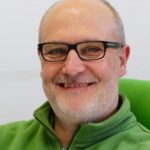Link to Pubmed [PMID] – 8918460
EMBO J. 1996 Nov;15(21):5824-32
The divalent cation calcium potentiates the physiological response of neuronal nicotinic receptors to agonists by enhancing ionic current amplitudes, apparent agonist affinity and cooperativity. Here we show that mutations in several consensus Ca2+ binding sequences from the N-terminal domain of the neuronal alpha 7 nicotinic acetylcholine receptor alter Ca2+ potentiation of the alpha 7-V201-5HT3 chimera. Mutations E18Q or E44Q abolish calcium-enhanced agonist affinity but preserve the calcium increase of plateau current amplitudes and cooperativity. On the other hand, mutations of amino acids belonging to the 12 amino acid canonical domain (alpha 7 161-172) alter all features of potentiation by enhancing (D163, S169), reducing (E161, S165, Y167) or abolishing (E172) calcium effects on ionic current amplitudes and agonist affinity. Introduction of the alpha 7 161-172 domain in the calcium insensitive 5-hydroxytryptamine (5HT3) serotoninergic receptor results in a receptor activated by 5HT and potentiated by calcium. In vitro terbium fluorescence studies with an alpha 7 160-174 peptide further show that mutation E172Q also alters in vitro calcium binding. Data are consistent with the occurrence of distinct categories of regulatory calcium binding sites, among which the highly conserved (alpha 7 161-172) domain may simultaneously contribute to calcium and agonist binding.

